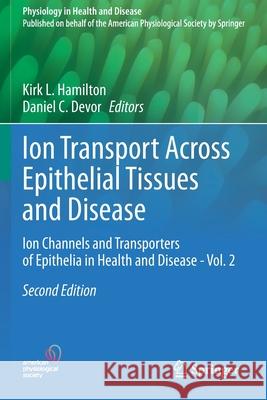Ion Transport Across Epithelial Tissues and Disease: Ion Channels and Transporters of Epithelia in Health and Disease - Vol. 2 » książka
topmenu
Ion Transport Across Epithelial Tissues and Disease: Ion Channels and Transporters of Epithelia in Health and Disease - Vol. 2
ISBN-13: 9783030553128 / Angielski / Miękka / 2021 / 404 str.
Ion Transport Across Epithelial Tissues and Disease: Ion Channels and Transporters of Epithelia in Health and Disease - Vol. 2
ISBN-13: 9783030553128 / Angielski / Miękka / 2021 / 404 str.
cena 523,30
(netto: 498,38 VAT: 5%)
Najniższa cena z 30 dni: 501,19
(netto: 498,38 VAT: 5%)
Najniższa cena z 30 dni: 501,19
Termin realizacji zamówienia:
ok. 22 dni roboczych
Bez gwarancji dostawy przed świętami
ok. 22 dni roboczych
Bez gwarancji dostawy przed świętami
Darmowa dostawa!
This book discusses the unique ion channels and transporters found within the epithelial tissues of various organs, including the kidney, intestine, pancreas and respiratory tract. Authors focus on demonstrating the crucial roles that each of these channels and transporters play in transepithelial ion and fluid transport across epithelia, as well as in maintaining homeostasis. It allows readers to gain an understanding of the fundamentals of ion transport, in terms of function, modelling, regulation, trafficking, structure and pharmacology. This is the second of three volumes highlighting the importance of epithelial ion channels and transporters in basic physiology and pathophysiology of human diseases.











